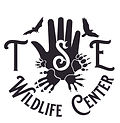Mammals
Remember when you find injured wildlife these animals will be stressed and scared, making them more likely to to act out in anger. So make sure to handle with gloves and other appropriate protective items.
Injured mammals may not be able to walk, or may walk in circles, not use a limb, or have discharge coming from their nose or mouth. If this describes your case please contact TSE right away. Not your situation? Check out the chart below for further help.
NEVER FEED orphaned wildlife! Many animals need special bottles and formula to survive. Feeding them improperly will leave the babies worse off than being hungry!


Helpful Hints to Capture Mammals
-
When handling larger mammals be sure to:
-
Wear protective equipment ( goggles, leather gloves, long sleeves, pants etc.)
-
Use either the of these capture techniques:
-
-
Blanket toss- use a light sheet to toss over the animal, place both the animal and sheet into the box. Make sure you know where their head and claws are before lifting the blanket!
-
Box Over- Gently place box over animal, use another piece of cardboard to make the floor/roof to the box, gently turn box right side up, and tape shut
-
Live trap the animal if it is injured but hard to catch
-
If you are working with larger mammals like fox or coyote it is not recommended to catch them on your own. If you need to immediately move them, use of a live trap or catch pole is required
-
Cover the animals eyes (throw a sheet over the animal)
When transporting injured mammals keep these key points in mind:
-
Once the bird in is the box never open the box especially when in the car
-
No music and limit talking
-
Never place the box in an enclosed truck
-
The floor board of a car is the most stable place to transport
-
In the summer, try to drive with windows down and limit the use of AC


.jpg)



